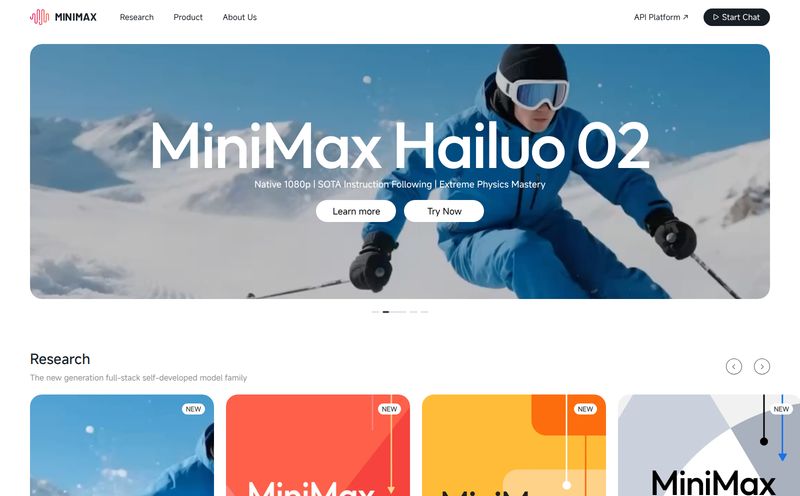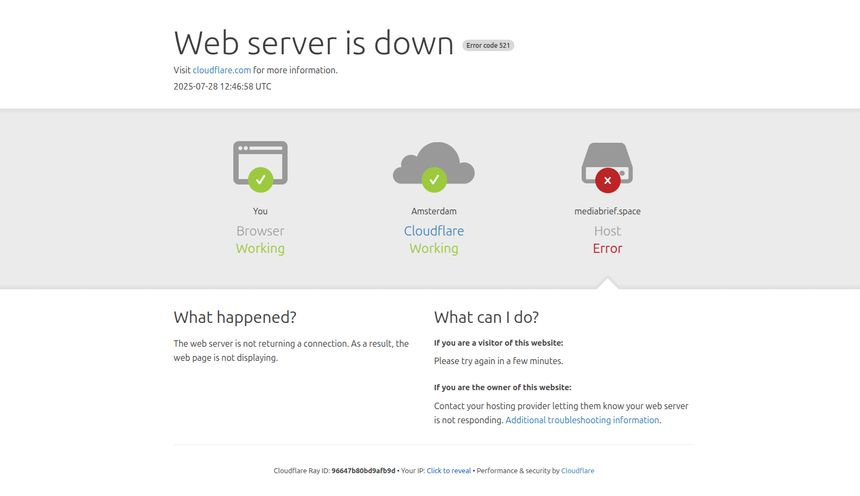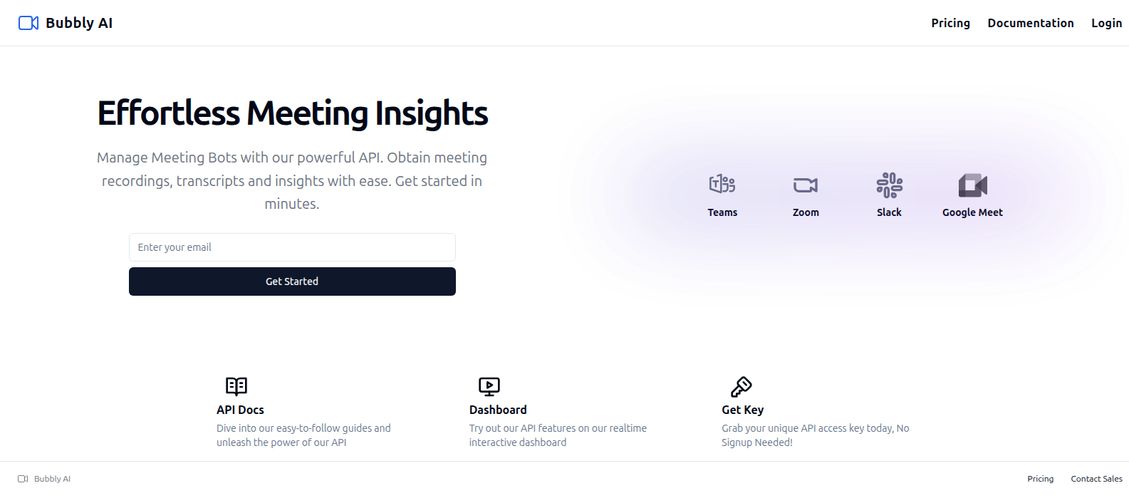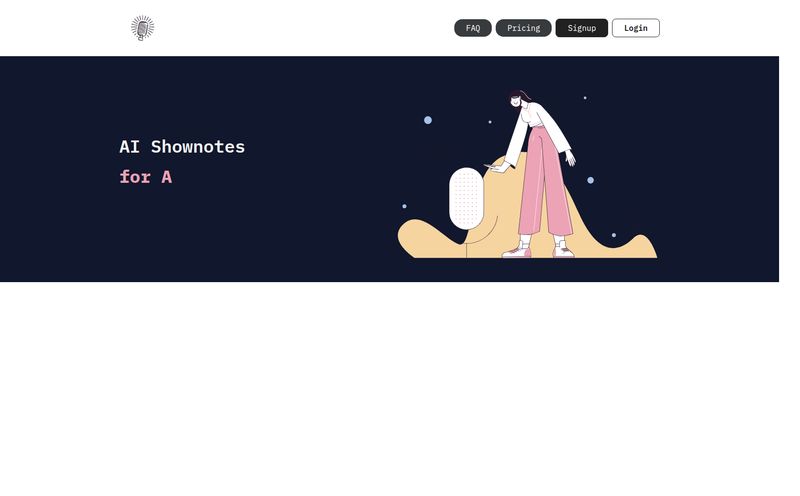For years, I’ve been telling my clients and fellow creators the same thing: if you want to grow, you have to think globally. The internet isn’t just your backyard anymore; it’s the whole planet. But going global with video has always come with a massive, expensive, and time-sucking headache: language barriers.
You either had to splash serious cash on a professional dubbing studio—we’re talking thousands of dollars and weeks of waiting—or slap on some subtitles and hope for the best. Subtitles are great, I use them all the time, but they don't have the same impact as hearing a voice in your own language. It's a different level of connection.
So when another AI tool promising to solve all this popped onto my radar, my first reaction was, naturally, a massive eye-roll. I’ve heard it all before. Robotic voices, clumsy translations... no thanks. But the buzz around a platform called Dub AI was a little different. The killer feature they were all talking about? AI voice cloning. The idea that it could translate my video and make it sound like me speaking Spanish or Japanese? Okay, now I’m listening.
What is This Dub AI Thing, Anyway?
So, what’s under the hood? At its core, Dub AI is an AI-powered platform designed to do one thing really well: take your video, translate the audio, and dub it into another language. But the magic is in how it does it. It’s not just some generic, Siri-like voice reading a script.
The platform claims it can analyze your voice, clone its unique characteristics, and then generate the translated audio in that same voice. The whole process is boiled down to three steps: Upload your video, pick a language, and download your newly dubbed content along with transcripts and subtitles. Simple. Almost... too simple?
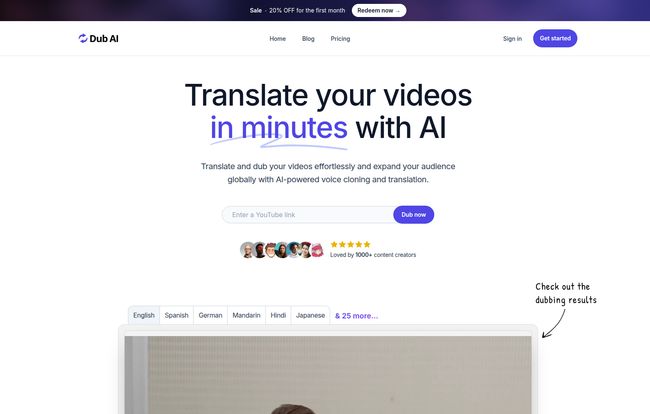
Visit Dub AI
The Core Features That Actually Matter
A features list is just a list until you figure out what it actually means for your workflow. Here's my breakdown of what I found genuinely useful.
The Voice Cloning: Your Voice, but in Japanese?
This is the star of the show, without a doubt. For any creator or brand, your voice is part of your identity. Think about it. When you listen to your favorite YouTuber, you recognize their voice instantly. Traditional dubbing loses that entirely. Dub AI's voice cloning aims to fix this. I tested it, and the result was... uncanny. Hearing my own cadence and tone speaking a language I barely know a few words of is a wild experience. It's not 100% perfect, there's still a hint of that AI smoothness, but it's miles ahead of anything I've tried before. It's like giving your content a universal passport while keeping its original photo ID.
Multi-Speaker Support for a Party
My first thought was, "This is cool for my solo videos, but what about interviews?" Thankfully, they thought of that. Dub AI can distinguish between different speakers in a single video. This is huge for podcasters who publish video versions, for anyone doing interview content, or for tutorials with more than one instructor. It keeps the conversation clear and prevents it from turning into a confusing mess of one single AI voice speaking all the parts. A small detail, but a critical one.
AI Translation Across 30+ Languages
The whole point is to go global, right? The platform supports over 30 languages. This isn't just about translating from English to Spanish. It means a creator in India can dub their Hindi content into German, or a creator in Brazil can dub their Portuguese videos into Korean. This opens up so many audience corridors that were previously walled off for anyone without a massive budget. We're all chasing the "MrBeast effect" of having multiple language channels, and this is probaly the most accessible way I've seen to start trying it.
Transcripts and Subtitles on Autopilot
This felt like a bonus gift. As part of the process, Dub AI automatically generates transcripts and subtitle files (like .srt). Anyone who’s ever manually transcribed a video knows how painfully slow that is. And from an SEO perspective, having subtitles is gold. It makes your content accessible to the hearing impaired and allows search engines to better understand what your video is about. This feature alone saves hours of work or the cost of a separate transcription service.
My Honest Take: The Good, The Bad, and The AI
Okay, so it sounds great on paper. But what’s it like in practice? The testimonials on their site are glowing, with people praising the natural sound and time saved. And I get it. The speed is phenomenal. A task that would take a human team a week is done in minutes. For a fast-moving content creator, that's a game-changer.
But let's be real. It's still AI. The biggest drawback is that you're reliant on its accuracy. For a straightforward tutorial, it's fantastic. But for content with a lot of slang, nuance, or complex humor, you’ll definitely want to have a native speaker review the transcript before you publish. A misplaced word or a flatly delivered joke could totally change the meaning. The other point to consider is the cost. While it's way cheaper than a studio, it’s a recurring expense if you go the subscription route, and the credit system takes a minute to get your head around.
Let’s Talk Money: Dub AI Pricing Explained
So how much does this magic cost? Dub AI uses a credit-based system, which is pretty common for AI services. They basically offer three tiers.
| Plan | Pricing | Best For |
|---|---|---|
| Pay As You Go | $72 for 7200 credits (one-time) | Creators who have a one-off project or want to test the waters without commitment. |
| Subscription | $48/month for 7200 credits/month (renews monthly) | Serious creators and businesses who consistently produce content and want the best per-hour rate. |
| Enterprise | Custom Pricing | Large organizations and teams with high-volume needs and a demand for API access or priority support. |
From what I gather, 7200 credits gets you about 2 hours of dubbing. So, on the Pay As You Go plan, you're looking at $36 per hour of video. With the subscription, it drops to $24 per hour (and that's after the first month's discount). In my experience, if you're going to use a tool more than once, the subscription models almost always offer better value. It forces you to be consistent, too.
Is Dub AI Right for You?
So who is this for? I see a few clear winners. YouTubers looking to launch a dedicated Spanish or Hindi channel without re-filming everything are the most obvious fit. Marketing teams trying to localize a single ad campaign for ten different regions will save an insane amount of time and money. E-learning and course creators can also massively expand their student base by offering their courses in multiple languages.
Who might want to hold off? If you’re producing a high-end cinematic film where every single emotional inflection has to be perfect, a dedicated human voice actor might still be the way to go. This tool is for scale and efficiency. It’s for the 95% of us who need to get good, solid content out to a wider audience without breaking the bank.
Frequently Asked Questions about Dub AI
Is Dub AI free to use?
No, Dub AI is a premium platform. It doesn't appear to have a free tier, but it offers a pay-as-you-go option, so you can try it on a single project without locking into a monthly subscription.
How does the credit system work?
Think of credits as your currency on the platform. You use them to pay for services like dubbing and translation. For instance, the 7200 credit packages (both Pay-as-you-go and Subscription) provide enough credits for about 2 hours of video dubbing.
Should I choose pay-as-you-go or a subscription?
If you have one or two videos you want to translate, the pay-as-you-go plan is perfect. If you’re a consistent creator who plans to dub videos regularly (e.g., weekly or monthly), the subscription offers a much better rate per hour and is the more economical choice in the long run.
What languages does Dub AI support?
The platform supports over 30 languages for translation and dubbing, covering major global markets. This allows you to target viewers in North America, South America, Europe, and Asia.
Is my voice data safe when using the cloning feature?
According to their FAQ, they address how voice data is used for AI model training. It's always a good practice to review the privacy policy of any AI service you use, but they seem to be transparent about the process.
What kind of media can I dub?
While they don't list specific file restrictions on the main page, the process is designed for standard video files. You can upload a file directly or just paste a YouTube link, which is incredibly convenient.
A New Tool in The Creator's Kit
So, is Dub AI the end of human dubbing artists? No, not at all. There will always be a place for the artistry and perfect nuance of a human performance. But that's not the point.
This isn't about replacing art; it's about enabling communication. Dub AI is a powerful tool of leverage. It gives individual creators and small businesses the kind of global reach that was once reserved for massive corporations. It's a tool that can turn your single-language channel into a global media brand. And for that, it’s not just good—it’s genuinely exciting. The barrier to entry for becoming a truly global creator just got a whole lot lower.
